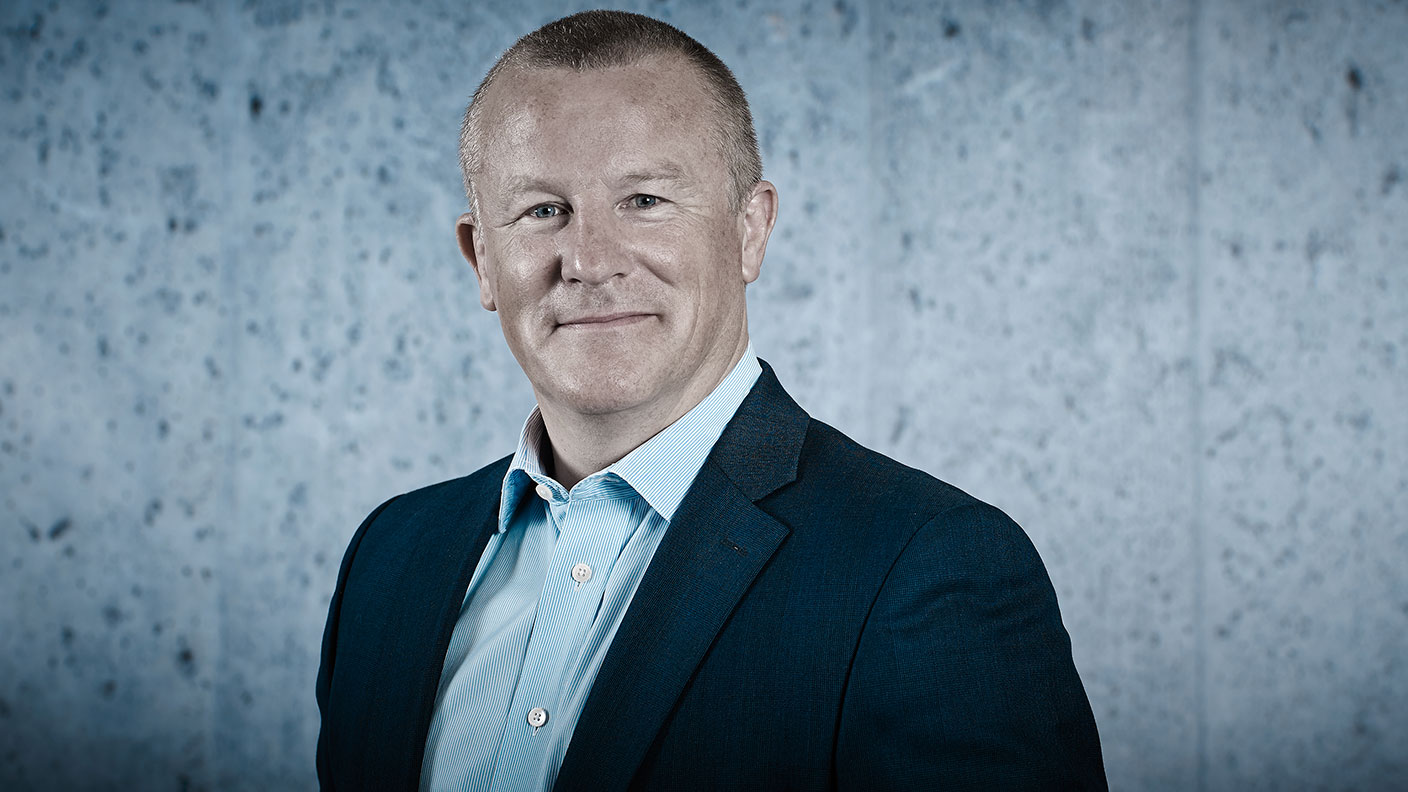In support of active fund management
We’re fans of passive investing here at MoneyWeek. But active fund management has its place too, says Merryn Somerset Webb.


No one can say Neil Woodford hasn’t touched a lot of lives. Just ask anyone who invested with him. Or his one-time protégé, Mark Barnett.
Barnett spent 24 years at fund manager Invesco. He became Woodford’s right-hand man, even taking over the firm’s High Income and Income funds when Woodford moved on to set up his now famous wealth-destroying machine, Woodford Investment Management, in 2014.
It hasn’t gone well. Money flowed out. Returns have been awful. Trustnet has Barnett as the second-worst performing equity income fund manager in the UK over one year and the worst over five. By mutual agreement with Invesco, Barnett is now unemployed.
MoneyWeek
Subscribe to MoneyWeek today and get your first six magazine issues absolutely FREE

Sign up to Money Morning
Don't miss the latest investment and personal finances news, market analysis, plus money-saving tips with our free twice-daily newsletter
Don't miss the latest investment and personal finances news, market analysis, plus money-saving tips with our free twice-daily newsletter
This isn’t just about Barnett and Woodford, of course. Their portfolios appear to have been particularly awful. But their advertised focus hasn’t helped: both value investing and income investing have been terrible places to be over the past few years.
Value stocks have outperformed growth stocks in only one year of the past 11 (this was 2016, in research by Oldfield Partners). As for income, dividends have been slashed around the world during the past few months and, according to Duncan Lamont of Schroders, history suggests they won’t be back in a hurry.
Over the past 150 years, there have been only six dividend bear markets in the US (where dividend payments fall 20% or more) but those six have dragged out unpleasantly – it has taken an average of 4.8 years for payouts to return to previous peaks. This makes sense:once you’ve cut your dividend, why put it up again until you are sure your financials are up to it in the long term?
Still, for the purposes of the investors in any of the Woodford or Barnett funds, it doesn’t really matter whether their failures are about them or about the market. They were well-known managers. They promised outperformance. They – very publicly – didn’t deliver.
Not all active fund managers are useless
I should think it’s enough to drive the average saver directly into the arms of the passive investment industry – something that even St. James’s Place, a wealth manager known for its affection for expensive active management, is beginning to do more of. You won’t get outperformance from an exchange-traded fund (unless it is tracking its index badly!) But you won’t have to pay for the promise of it either.
This is a perfectly reasonable response. I’m keen on index tracking investments – I have plenty of ETF investments of my own and I am pretty pleased with them, particularly the one tracking small gold-mining company share prices.
But I’m also still a believer in active fund management. That’s partly because, once you stop to think about it, you will realise that there is no such thing as fully passive investment. Someone has to choose what makes up a tracker or ETF (they never track an index exactly) and someone has to choose which ones to buy. There is no way to remove choice and hence an element of skill, from investing.
That aside, while it is true that, on average, active fund managers slightly underperform the market as a whole, it isn’t true that all active managers are useless. Far from it. There are obvious outliers in the business.
Results this week from Scottish Mortgage Investment Trust – which I hold – will have given even the most committed passive investors pause for thought, for example. Over the past ten years, thanks to its managers’ pursuit of innovation and long-term growth, it has made an annualised total return of 16.5% a year against the FTSE All World index total return of 8.6%.
However, even workaday active managers tend to do rather better than you think. Simon Evan-Cook of Premier Miton Investors suggests looking at the Vanguard FTSE UK All Share tracker from its inception in December 2009 against the IA UK All Companies sector. The former has returned 77% and the latter 84% after fees.
That’s not bad – and given that the All Companies calculation includes trackers, you could make active funds look even better if you took them out of the numbers too. The comparison holds good for the nasty part of this year (active has outperformed year to date). It also holds outside the UK. Research from BMO Global Asset Management last year showed the average active fund outperforming the average passive over 20 years, not just in the UK, but in Europe and Japan too.
It isn’t true of the US, where most studies into this kind of thing are done, presumably because performance there is led by a few huge tech companies (now more than ever). There, winners take all – and the winners dominate every tracker.
How to pick a good active fund
But back to the UK. The real point to bear in mind here is that the average active fund has outperformed over the long term. Your job, then, as a UK investor with the idea of beating the index a little, is to make sure that the returns on your holdings add up to at least the average of the UK active fund sector. That in turn could mean little more than avoiding holding the worst funds in it.
How hard can that be, particularly now Woodford and Barnett have packed their bags? Harder in practice than in theory, of course. But there are a few key starting points.
First, buy cheaply. A fund with ongoing charges of 0.5% is clearly going to find it easier to outperform after fees than one with ongoing charges of 0.9%. Second, buy genuinely active funds. If a fund is a closet tracker (buying roughly the stocks in an index and hoping for the best) and charging active fees, it is pretty likely to be one of the ones dragging average performance numbers down.
Look for the portfolio’s “active share” measure to be over 80 (where zero is holding exactly the same shares as an index and 100 is having none of them). Then choose five to six funds of these cheapish active ones with sensible sounding long-term strategies – remembering that, while paying whatever it takes to own growth stocks looks like the only way to invest right now, over the longer term it is the price you pay that determines the return you make.
Mark Barnett and Neil Woodford started out as value investors (obviously, things went a little haywire at some point after that). Their time won’t come again. But value’s time might. Best diversify your fund choices to reflect that possibility.
• This article was first published in the Financial Times
Get the latest financial news, insights and expert analysis from our award-winning MoneyWeek team, to help you understand what really matters when it comes to your finances.
Merryn Somerset Webb started her career in Tokyo at public broadcaster NHK before becoming a Japanese equity broker at what was then Warburgs. She went on to work at SBC and UBS without moving from her desk in Kamiyacho (it was the age of mergers).
After five years in Japan she returned to work in the UK at Paribas. This soon became BNP Paribas. Again, no desk move was required. On leaving the City, Merryn helped The Week magazine with its City pages before becoming the launch editor of MoneyWeek in 2000 and taking on columns first in the Sunday Times and then in 2009 in the Financial Times
Twenty years on, MoneyWeek is the best-selling financial magazine in the UK. Merryn was its Editor in Chief until 2022. She is now a senior columnist at Bloomberg and host of the Merryn Talks Money podcast - but still writes for Moneyweek monthly.
Merryn is also is a non executive director of two investment trusts – BlackRock Throgmorton, and the Murray Income Investment Trust.
-
 Zoopla: house price growth stalled in 2025 but forecasts for 1.5% higher next year
Zoopla: house price growth stalled in 2025 but forecasts for 1.5% higher next yearSales soared this year with more than a million deals done but buyers drove hard bargains keeping a lid on prices. A small bounceback in valuations is predicted for 2026, depending on where you live.
-
 UK sets out crypto regulatory proposals
UK sets out crypto regulatory proposalsThe government has tabled legislation that sets out a regulatory framework for cryptocurrencies, while the regulator will consult on balancing innovation and consumer protections
-
 Halifax: House price slump continues as prices slide for the sixth consecutive month
Halifax: House price slump continues as prices slide for the sixth consecutive monthUK house prices fell again in September as buyers returned, but the slowdown was not as fast as anticipated, latest Halifax data shows. Where are house prices falling the most?
-
 Rents hit a record high - but is the opportunity for buy-to-let investors still strong?
Rents hit a record high - but is the opportunity for buy-to-let investors still strong?UK rent prices have hit a record high with the average hitting over £1,200 a month says Rightmove. Are there still opportunities in buy-to-let?
-
 Pension savers turn to gold investments
Pension savers turn to gold investmentsInvestors are racing to buy gold to protect their pensions from a stock market correction and high inflation, experts say
-
 Where to find the best returns from student accommodation
Where to find the best returns from student accommodationStudent accommodation can be a lucrative investment if you know where to look.
-
 The world’s best bargain stocks
The world’s best bargain stocksSearching for bargain stocks with Alec Cutler of the Orbis Global Balanced Fund, who tells Andrew Van Sickle which sectors are being overlooked.
-
 Revealed: the cheapest cities to own a home in Britain
Revealed: the cheapest cities to own a home in BritainNew research reveals the cheapest cities to own a home, taking account of mortgage payments, utility bills and council tax
-
 UK recession: How to protect your portfolio
UK recession: How to protect your portfolioAs the UK recession is confirmed, we look at ways to protect your wealth.
-
 Buy-to-let returns fall 59% amid higher mortgage rates
Buy-to-let returns fall 59% amid higher mortgage ratesBuy-to-let returns are slumping as the cost of borrowing spirals.
